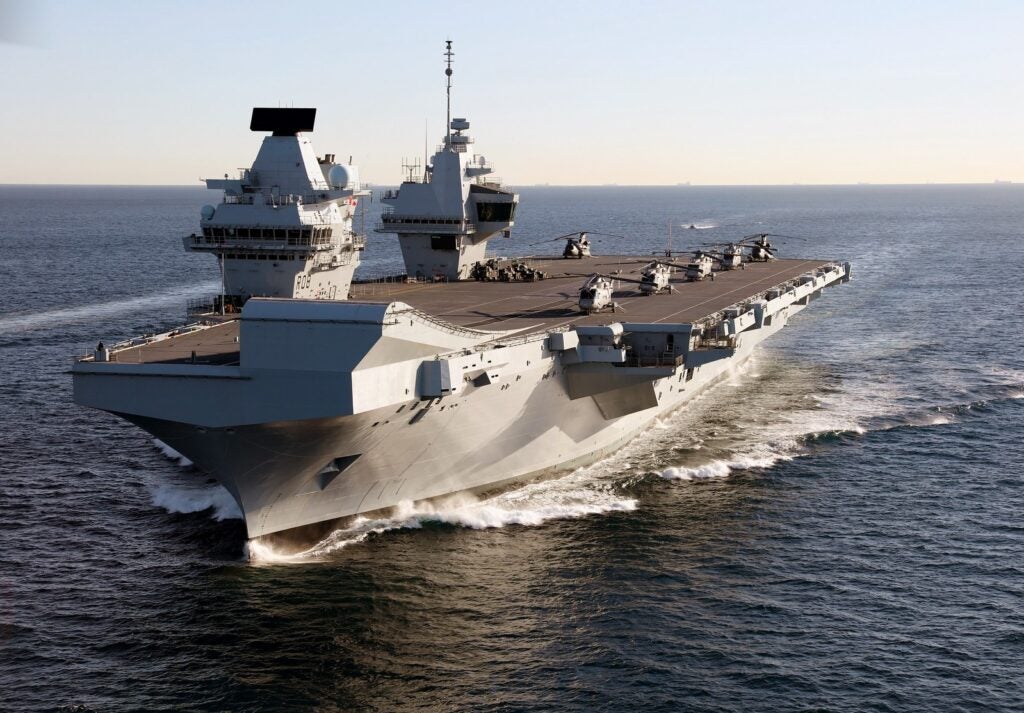Strange “Aircraft Carrier” Seen Outside China’s Guangzhou Shipyard
On the 26th of November, Douyin user Lac59888 posted a video of a strange square flattop sailing outside Guangzhou Shipyard International. Sailing under its own power, the flattop was clearly seen with two islands on top of the presumed flight deck. Against the background two masts can be seen, one attached to each of the islands, and a crane in front of the smokestack placed at the rear. Curiously, the vessel sports no People’s Liberation Army Navy insignia or hull number, instead, a logo of the China State Shipbuilding Corporation(CSSC) has been painted on the smokestack.
In the port side shot available, we can see two cut-outs, of the type used for lowering and recovering boats. More importantly, a similar cut-out can be spotted on the stern, suggesting the presence of a well deck.
The design of the carrier-like ship borrows from both civilian and military ideas. Most notably in its employment of the dual island architecture, improving redundancy and seperating flight and navigation operations. As seen on the Queen Elizabeth class of the Royal Navy and DSME’s proposal for South Korea’s CVX-class.

This new ship also appears to match the description within an unconfirmed Chinese government bid, calling for a ship that is:
- a test platform 200 metres long, with a runway 25 metres in width, of dry displacement 15000 tons, with maximum speed no less than 16 knots in calm waters.
- Of width 38.8 metres, depth 16.5, draught 5. Cruising at no less than 12 knots, endurance no less than 5000, endurance of 40 days. Safe navigation at sea state 7, and deck operations at 4.
- Steel hull, with two variable pitch propellers and rudders, CODAE powertrain, bulbous head, square aft, straight through flight deck, gangways, and twin island style construction for specialized large deck operations/oceanic research/scientific test platform, with the fore reserving space for hangers, and the aft reserving space for a well deck.
- To be delivered no later than 18 months after signing at specified port.

Should the ship indeed be the manifestation of the bid, it would be a heretofore unheard-of civilian “amphibious assault ship”, and would be a formidable research vessel indeed. However, the production of this ship must also be read in context of China’s history of producing dual-use ships.
“Dual Use”
The idea of “dual use”, from technologies to more physical assets, refers to abilities and equipment that have both military and civilian applications. With civilian applications, dual use assets be more easily procured from other powers or produced domestically, under the guise of corporate technological transfers and private investment. Once at their disposal, such assets can then be clandestinely utilized for military advancements or overtly called into action in times of war.
The creation of dual-use vessels in particular also has precedent, with Roll-On/Roll-Off vessels built to “National Defense Requirements” ferrying Chinese EVs to distant markets in peacetime, but also participating in military sealift exercises , moving more troops and material than what only military hulls can achieve.
It would not be far-fetched to imagine such a vessel appropriated by the Chinese Merchant Marine, operating helicopters and landing crafts, perhaps even fixed-wing drones to assist in establishing a beachhead. Not unlike the use of escort carriers in the Second World War.
Escort Carriers
During the Second World War, the construction of full sized fleet carriers came with significant time and resource investment. As a stopgap, more compact escort carriers were devised upon pre-existing commercial hulls and built to a commercial rather than military standard. Thanks to these cost-cutting measures, escort carriers could be produced en-masse and provide air power where a full fleet carrier could not be spared.

Going into the war with a powerful shipbuilding base, the United States at the time could immediately mobilize the dual-use industry. With minimal retooling these derivative blueprints rolled off the assembly line to quickly complement the fleet after Pearl Harbour. In this, the escort carrier was American industrial might brought to life.
Conclusion
The purpose of the flattop, rapidly constructed over a matter of months, still eludes us. However, the presence of what appears to be a carrier in civilian control still raises eyebrows. With the likely presence of the well deck and a matching bid for a long endurance research vessel, much remains to be seen as to this vessel’s service going forward.
Update – 12/3/24:
Some additional footage of the vessel has appeared giving us a closer look at its side profile. In photograph overlooking the ship it appears there is an elevator and VTOL markings on the flight deck. There are no signs of a rear well deck or of catapult-barrier (CATOBAR) operations.

